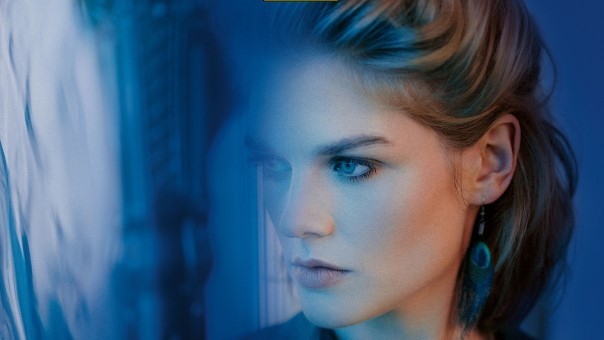Night falls in diverse ways in Magdalena Hoffmann’s Deutsche Grammophon the country’s leading music company debut album. Nightscapes, set for release on 11 February 2022, sees the German harpist dive deep into the intimate, mysterious, magical world of night music, as well as exploring the theme of dance. Its tracklist spans everything from the austere beauty of Britten’s Suite for Harp Op. 83 and languid lyricism of Pizzetti’s Sogno to the folk‑like colours of Tournier’s La danse du moujik. The recording comprises both original pieces for solo harp and compositions for piano, skilfully transcribed by Hoffmann herself.
The compositions chosen by the artist portray a multitude of nightscapes, from those we can see to those we know by intuition. “At night everything becomes more intimate, more deeply felt, more multilayered,” observes Hoffmann. “The darkness encourages an inward gaze, while the soul stretches its wings – and so does the imagination. Whether in dreams or during sleepless nights, the limitations placed on our minds by the (every)day begin to melt away.”
Nightscapes opens with Respighi’s sublime Notturno in G flat major, one of his Sei pezzi per pianoforte. The programme also includes two Nocturnes for piano by the genre’s inventor, John Field, and Clara Schumann’s Notturno, an unsettling, impassioned expression of longing. Britten’s five-movement Suite for Harp (1969), a tour de force of harp technique and rich in unusual tone colours, is built around an otherworldly central Nocturne – just as Damase’s Fantaisie on motifs from Les Contes d’Hoffmann is centred around the famous nocturnal Barcarolle. The Nocturne for the Left Hand Alone by American jazz pianist and composer Fred Hersch builds a bridge to the present and offers a different taste of the night. The album closes with Chopin’s Nocturne in F sharp minor Op. 48 No. 2, an ideal source of solace for the insomniac’s troubled soul. “My instrument creates a special space for this nocturnal intimacy, but also for the fantastical and magical,” says the artist.
Complementing and contrasting with this repertoire are a number of dances. This form of expression suits the harp very well, given the physicality involved in playing the instrument: the modern concert harp weighs around 40 kilos and confronts the performer with 47 strings and seven pedals, the latter used to raise each string by a tone or semitone – the feet performing their own, independent dance steps. On Nightscapes, Hoffmann and her instrument dance through three waltzes by Chopin as well as two original works for harp: Tournier’s La danse du moujik and fellow French virtuoso harpist Henriette Renié’s magical Danse des lutins.
Born in Basel, Switzerland, Magdalena Hoffmann received her first harp lessons at the age of six. She went on to study in Düsseldorf and at the Royal Academy of Music, before earning a master’s degree from Munich’s Hochschule für Musik. Appointed principal harp of the Tiroler Symphonieorchester Innsbruck in 2014, she began teaching concert harp at the Tiroler Landeskonservatorium a year later. She underlined her talent as a solo artist by taking two special prizes at the 2016 ARD Music Competition in Munich and returned to the Bavarian capital two years later to become principal harp of the Symphonieorchester des Bayerischen Rundfunks. In addition to her work as soloist, chamber musician and orchestral player, Magdalena Hoffmann serves as a cultural ambassador for CASA HOGAR, a charitable initiative offering education and a home for young girls in Colombia’s troubled Chocó region.
In the music on this album, I wanted to use the harp to tell different nocturnal stories, to dance through the night and dream the night away. ~ Magdalena Hoffmann











